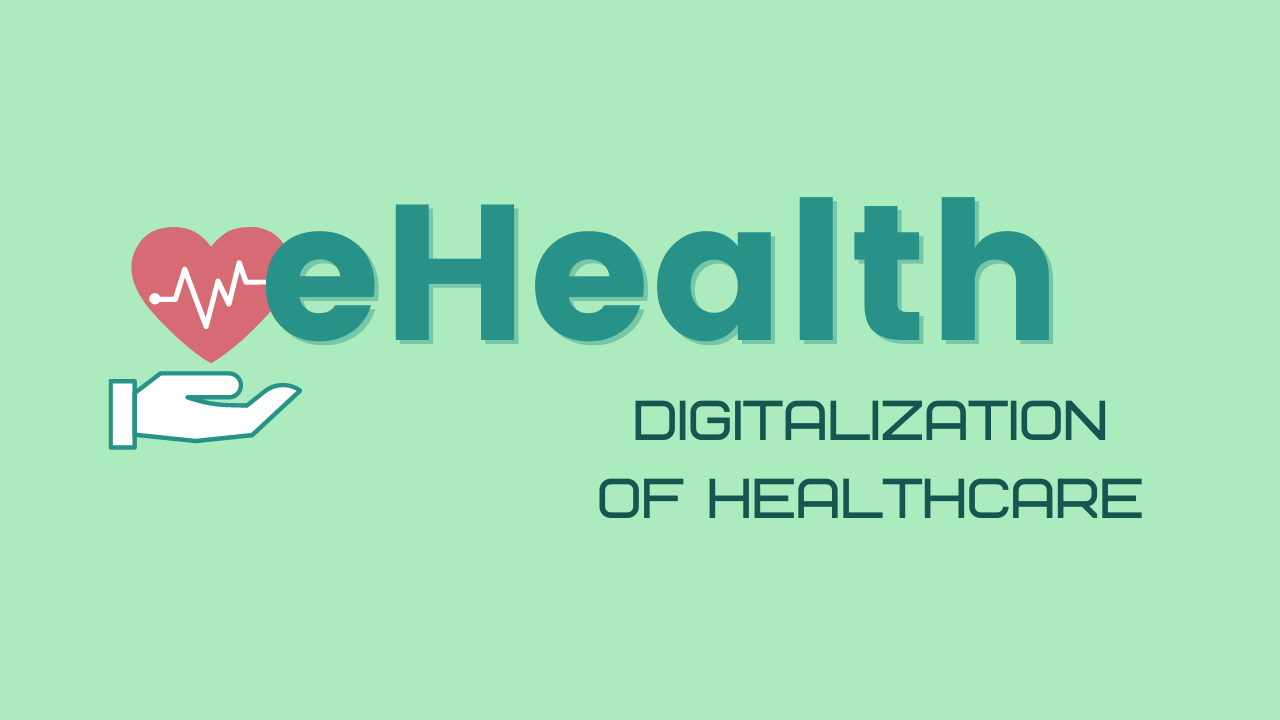eHealth
eHealth
Blog Article
eHealth
Overview
eHealth, often called electronic overall health or healthcare technology, refers back to the utilization of Digital conversation and knowledge technological innovation inside the Health care sector. It encompasses a wide range of systems and applications directed at strengthening the efficiency, performance, and high quality of Health care delivery.
Aims of eHealth
The primary aims of eHealth may be summarized as follows:
Enhanced Usage of Healthcare: By leveraging electronic systems including telemedicine and remote affected individual monitoring, eHealth aims to boost usage of healthcare expert services for individuals living in distant spots or with restricted mobility.
Improved Quality of Care: By tools like electronic well being data (EHRs) and scientific decision help devices (CDSS), eHealth seeks to enhance the quality of care by facilitating correct and well timed information and facts exchange amongst healthcare pros.
Affected individual Empowerment: By providing individuals with access to their health-related data, personalised health and fitness applications, and online educational resources, eHealth empowers folks to get an Energetic position in taking care of their own individual health.
Price Efficiency: Utilizing electronic platforms may help lower administrative prices affiliated with paper-centered units though enabling economical coordination concerning unique stakeholders in the healthcare ecosystem.
Important Applications of eHealth
Several vital apps lead to attaining the targets outlined higher than:
Electronic Wellness Records (EHRs):
EHRs are electronic versions of individuals' medical documents which can be very easily accessed by authorized Health care companies involved in a client's care. They offer a comprehensive perspective of the affected person's professional medical heritage, lab final results, medications prescribed, allergic reactions, along with other relevant medical information.
Telemedicine:
Telemedicine will involve providing Health care remotely by means of online video conferencing or mobile phone phone calls. It allows doctors to consult with clients who can't bodily go to hospitals or clinics resulting from geographical constraints or mobility problems.
Cellular Health (mHealth) Apps:
mHealth applications are smartphone applications that supply many healthcare companies, such as tracking very important signs, reminding sufferers to choose remedies, supplying use of health and fitness training resources, and facilitating interaction with Health care providers.
Remote Individual Checking (RPM):
RPM will allow Health care experts to watch a client's critical signs as well as other overall health parameters remotely working with wearable equipment or sensors. This allows early detection of health concerns and well timed interventions.
Health Info Trade (HIE):
HIE consists of the protected sharing of affected person info across diverse Health care businesses, guaranteeing seamless coordination and continuity of treatment involving suppliers in several options.
Medical Determination Guidance Devices (CDSS):
CDSS leverage synthetic intelligence algorithms to research health care knowledge and aid healthcare pros in generating evidence-primarily based decisions regarding analysis, cure strategies, drug interactions, and a lot more.
Overall health Wearables:
These are generally wearable gadgets like Health and fitness trackers or smartwatches that can obtain physiological knowledge on a person's exercise routines, coronary heart fee patterns, sleep excellent, and a lot more.
Benefits of eHealth
The adoption of eHealth presents numerous benefits for both of those men and women and the overall healthcare system:
Enhanced Efficiency: eHealth streamlines administrative jobs by lowering paperwork and enabling the Digital exchange of data amongst stakeholders involved with affected person treatment.
Enhanced Conversation: Electronic overall health tools facilitate helpful conversation amongst patients and their Health care providers even though also promoting collaboration amid distinctive specialists involved with a patient's remedy approach.
Access to here Specialized Treatment: Telemedicine allows individuals residing in distant spots or underserved communities to consult with specialist Health professionals who may not be physically current close by.
Well timed Interventions: By distant checking methods or cellular apps that present alerts or reminders for medication adherence or abide by-up appointments, eHealth assists avert difficulties by facilitating early interventions.
Enhanced Affected individual Outcomes: By supplying hassle-free use of clinical information and facts on-line in addition to customized overall health steering, eHealth empowers clients to actively have interaction in their own individual Health care and regulate Serious conditions correctly.
Worries and Concerns
While the implementation of eHealth comes along with various Gains, In addition it offers troubles and worries that must be tackled:
Privacy and Stability: Shielding client knowledge from unauthorized accessibility is a significant issue from the digital wellness landscape. Robust protection actions, compliant with related privateness rules, should be executed to guarantee knowledge confidentiality.
Interoperability: Different Health care methods and purposes might not usually seamlessly talk to each other due to deficiency of interoperability specifications. Making sure productive exchange of knowledge throughout platforms is critical for complete affected individual care.
Electronic Divide: Not Everybody has equivalent access to digital systems or possesses the necessary electronic literacy abilities expected for utilizing eHealth instruments efficiently. Bridging the electronic divide becomes important to ensure equitable entry to healthcare products and services.
Regulatory Compliance: The dynamic nature of know-how often surpasses current regulatory frameworks. To totally leverage the key benefits of eHealth when safeguarding patient rights, rules have to have to keep tempo with technological enhancements without stifling innovation.
Conclusion
eHealth plays a pivotal position in modernizing Health care supply by harnessing technology for improved accessibility, good quality of treatment, client empowerment, and price performance. The popular adoption of Digital communication tools, telemedicine providers, cellular overall health apps, remote monitoring techniques, together with other ground breaking methods contributes toward a far more linked and individual-centered approach to healthcare provision. Nonetheless, addressing issues connected with privacy safety, interoperability specifications compliance bridging inequality gaps in World wide web accessibility are essential measures toward achieving the entire opportunity of eHealth.
